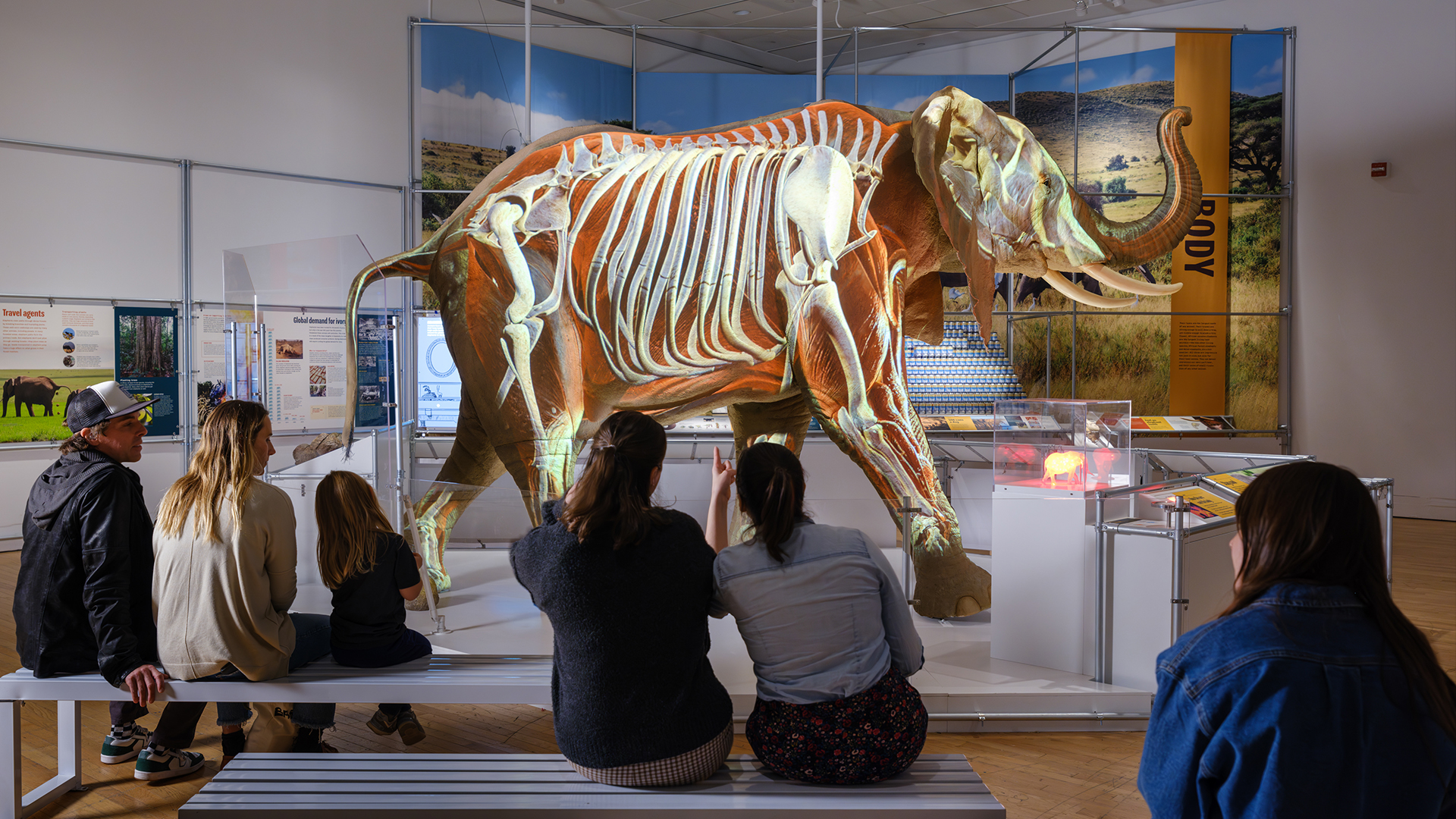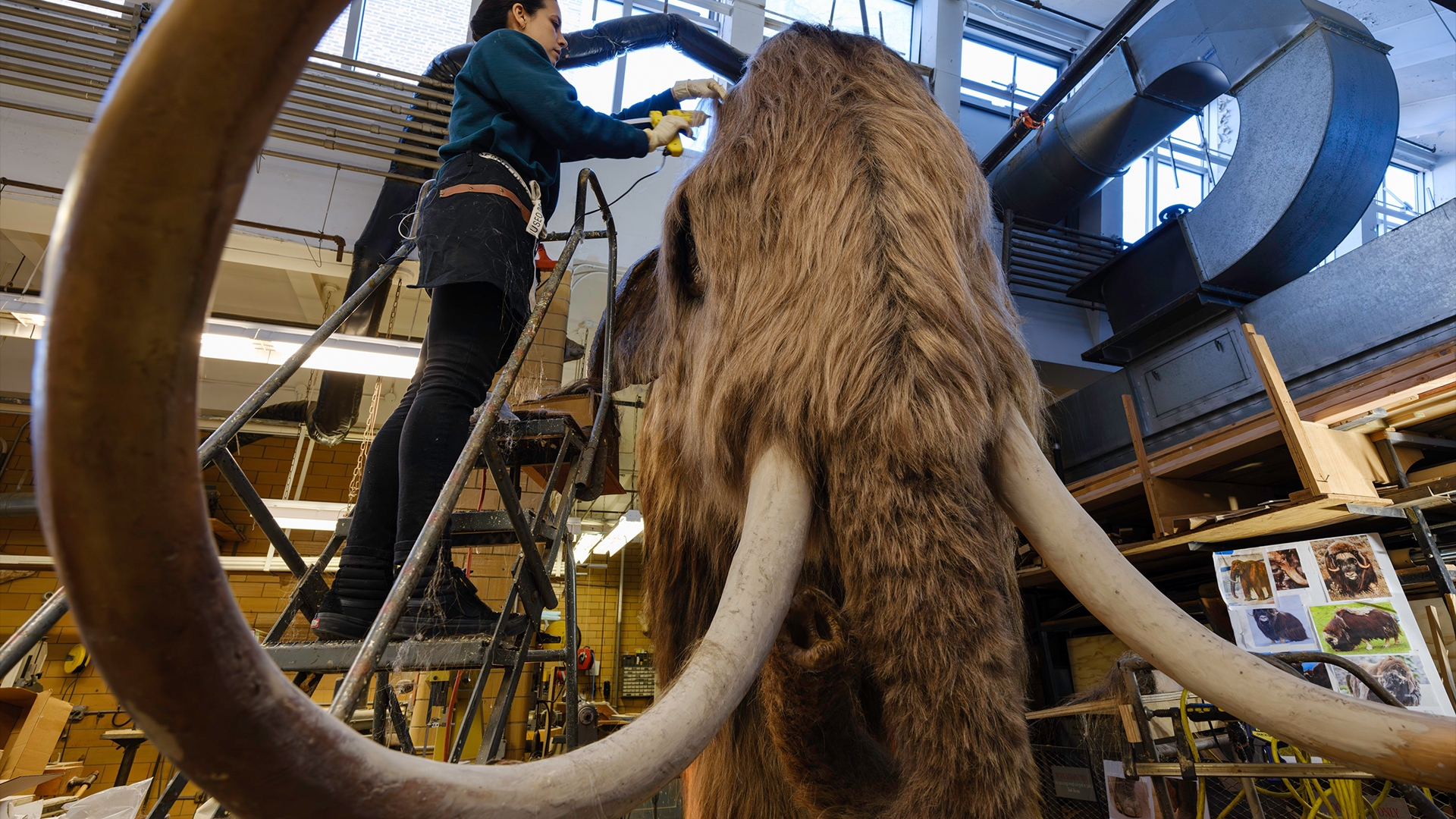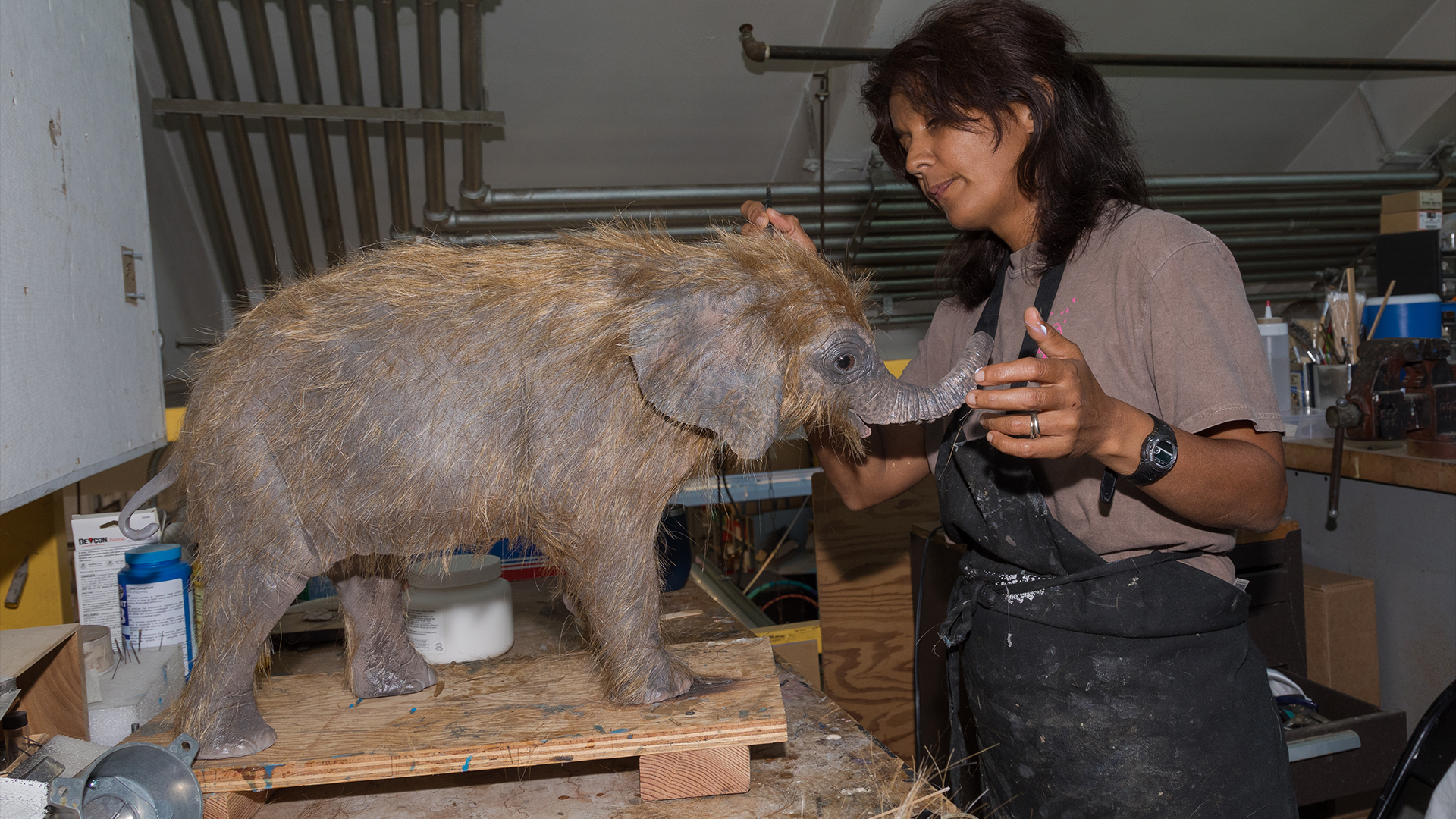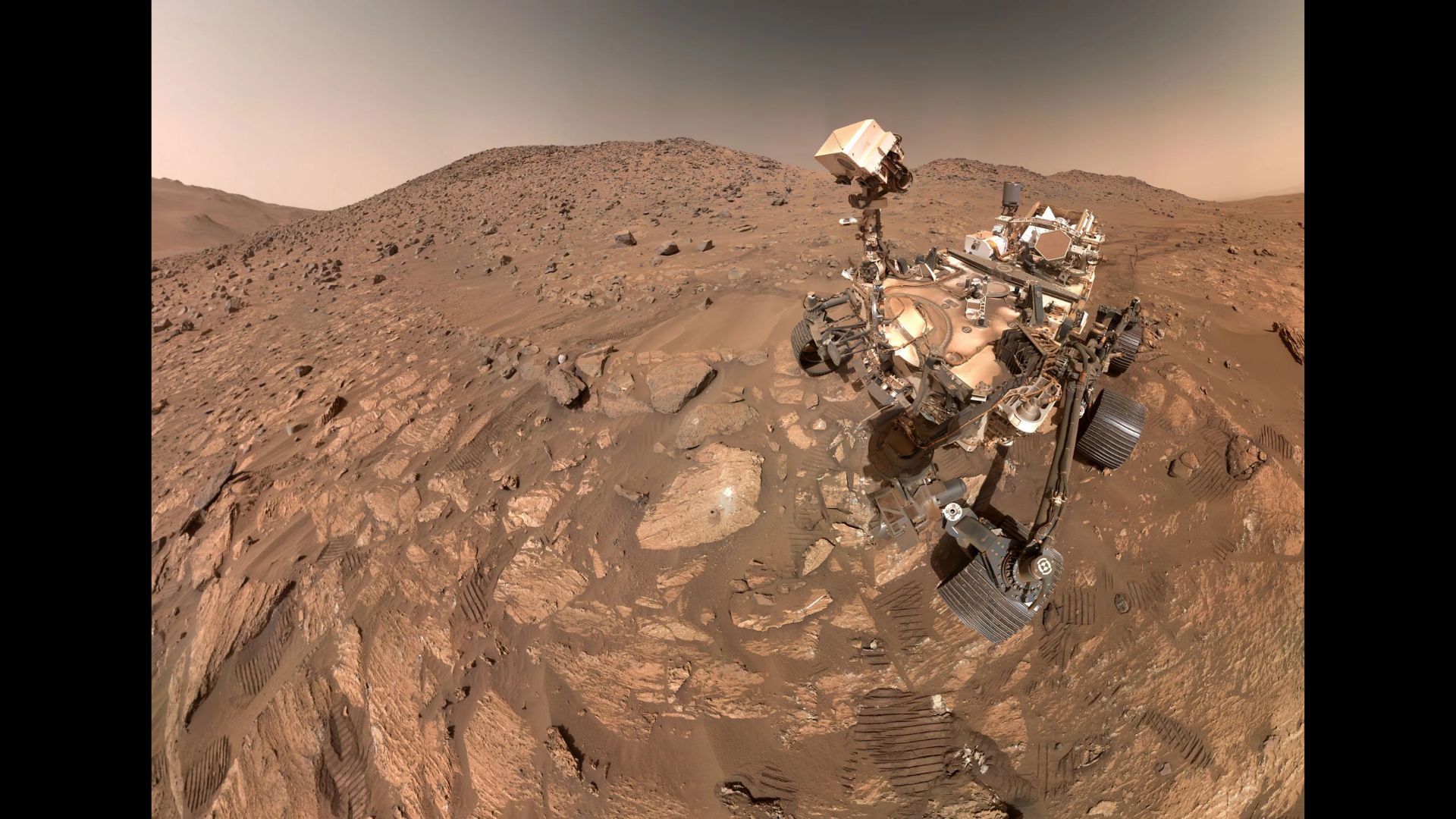Dwarf elephants and shedding mammoths shine at NYC's 'Secret World of Elephants'
A new show on "The Secret World of Elephants" at the American Museum of Natural History in New York City dishes on the evolution and remarkable lives of these huge (and sometimes dwarf) pachyderms.

After the dinosaur-killing asteroid struck Earth about 66 million years ago, it took only a few million years for the earliest known elephant relative to emerge.
This was the dog-size Eritherium, the earliest known proboscidean, which lived around 60 million years ago in North Africa.
"But it didn't look anything like a modern elephant," Ross MacPhee, curator of "The Secret World of Elephants," a new exhibit opening Monday (Nov. 13) at the American Museum of Natural History (AMNH) in New York City, told Live Science. "There were no big tusks and no large body size."
The 10-pound (4.5 kilograms) Eritherium is just one of the species highlighted in the exhibit, and one of more than 200 proboscidean species that have lived on Earth. Today, only three remain: the African savanna elephant (Loxodonta africana), the African forest elephant (Loxodonta cyclotis) and the Asian elephant (Elephas maximus).
These modern elephants and their proboscidean cousins are the main attraction of the new exhibit. But a few iconic pachyderms steal the show, including a life-size model of a 4-foot-tall (1.2 meters) mama Sicilian dwarf elephant (Palaeoloxodon falconeri) and her very hairy calf, as well as a huge model of a molting woolly mammoth (Mammuthus primigenius).
Proboscideans didn't always look like today's species; they reached modern sizes only around 40 million years ago, when the 2-ton (1.8 metric tons) Barytherium — which was outfitted with eight very short tusks, four on top and four below — arose.
Get the world’s most fascinating discoveries delivered straight to your inbox.
And once they were big, some proboscideans shrank. These creatures often swam to, or got stranded on, islands. And due to the island effect — that small animals on islands tend to evolve into giant versions of their mainland relatives, and large animals tend to evolve into dwarf versions of their mainland relatives — they downsized. Over time, "they evolved smaller body size because you need less food, less water — it's easier to walk, so also for your joints, it's better" to be small, said Alexandra van der Geer, a paleontologist at Naturalis Biodiversity Center in the Netherlands who served as a consultant for the exhibit and helped create the Sicilian dwarf elephant models.
Interestingly, the largest and smallest elephants on record came from the same genus: Palaeoloxodon. The largest elephant, P. antiquus — a 13-foot-tall (4 m), straight-tusked beast from Europe — likely swam to Sicily, where its descendants gave rise to the 98% lighter dwarf, P. falconeri.
Meanwhile, the earliest known mammoth (Mammuthus subplanifrons) evolved around 5 million years ago in South Africa. Woolly mammoths evolved about 800,000 years ago, when spreading into Eurasia and eventually North America. Again, due to the island effect, a "mini-mammoth" emerged on the Channel Islands off California. Thought to arise from a Columbian mammoth (Mammuthus columbi), the pygmy Mammuthus exilis stood about 5.5 feet (1.7 m) tall at the shoulders.
Many proboscideans went extinct at the end of the last ice age, around 12,000 years ago. The reasons for this mass die-off aren't completely understood, but it's likely that both climate change and human hunters played a role, studies have found.
Today, research continues to reveal the secret world of elephants. For instance, DNA shows that their closest relatives aren't hippos or rhinos, which also have thick, gray skin, but rather manatees, dugongs, and furry, rabbit-size hyraxes.The "Secret World of Elephants" will run for at least a year at the AMNH before traveling the country.

Laura is the managing editor at Live Science. She also runs the archaeology section and the Life's Little Mysteries series. Her work has appeared in The New York Times, Scholastic, Popular Science and Spectrum, a site on autism research. She has won multiple awards from the Society of Professional Journalists and the Washington Newspaper Publishers Association for her reporting at a weekly newspaper near Seattle. Laura holds a bachelor's degree in English literature and psychology from Washington University in St. Louis and a master's degree in science writing from NYU.







